VFL-82-JP
Bleedin' Orange...
- Joined
- Jan 17, 2015
- Messages
- 20,655
- Likes
- 57,444
I approach this episode of the series with humility. I know going in that whatever I provide will be inadequate. Books have been written about this man. There is no way to do him justice in anything as short as a forum post.
I'll just do my best to provide some nuggets of interest. In particular, I will try to describe Neyland not as an icon of the sport, but as a person, like someone you might have known. Consequently, this post will be light on the football achievements, and heavier on the man himself. At least, that's the goal. We'll see how it goes.
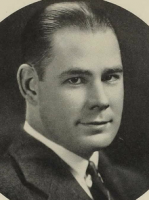 #11 -- Robert Reese Neyland, 1926-1934, 1936-1940, and 1946-1952 (21 seasons)
#11 -- Robert Reese Neyland, 1926-1934, 1936-1940, and 1946-1952 (21 seasons)
Robert Reese Neyland was born on a winter day in 1892 in Greenville, Texas, a town of about 10,000 folks in the northeast corner of the state--about 50 miles from Dallas in one direction and the Oklahoma border in the other. Prairie grasslands as far as the eye could see, though maybe covered by a dusting of snow when Robert came into the world.*
His dad, Robert Reece Neyland, Sr., was a lawyer, and his mother Pauline nee Lewis, a home maker. Robert had an older sister, Carroll, and would a few years later have a younger brother, Mayo. Interestingly, Robert's middle name was spelled differently than his father's, and he would apparently never use the Junior suffix [instead, he would much later in life give the Jr. title to his son]. As far as I've been able to find, he never went by Bob or Rob; it was always Robert.
I didn't find anything describing Neyland's youth, so we'll just have to assume he was an athletic child, running around the community and the prairies with his friends, playing pickup games in open fields. He can't have been too shabby in schoolwork, either, given his higher education at a time when going to college was not at all common.
Graduating from high school in the summer of 1910, Neyland immediately enrolled in the local community college, Burleson Junior College. After one year there, he transferred to Texas A&M to study engineering. He also joined the Aggie baseball and football teams. One year later, he was notified that he'd won a competitive appointment to West Point.** He reported to the Academy in the summer of 1912; probably took a train up.
Back in the day, every cadet at West Point was an engineering student; there were no other degrees offered, just engineering.*** And not only was engineering the subject of the day, it was also the preferred career field, or "branch" of the Army, that the higher-ranking graduates tended to want to choose. Those whose class standing wasn't high enough to get into the Corps of Engineers would have to pick from among the infantry, cavalry, artillery, and the like. Neyland would become an Engineer officer--another indicator that his academics were solid.
Academics and military education (formations, parades, exercises, etc.) didn't take up all of Robert's energy; he had plenty left over for sports. He played end (back then, a lineman position) for the football team, was the pitcher on the baseball diamond, and in his sophomore, junior, and senior years won the school heavyweight boxing championship.
The boxing titles came about this way. In his yearling year (at West Point, sophomores are yearlings, just as freshmen are plebes), Robert got in some trouble for "a hazing incident," and was prohibited from participating in any sports "outside the gym." Baseball and football were out for the next six or seven months--an eternity, in the mind of a young man. So he took up boxing.
Luckily for us Vols fans, he was able to get back to football (and baseball) his junior and senior years.
You might recognize the names of a couple of Neyland's West Point teammates: Dwight Eisenhower was with him on the gridiron, and Omar Bradley shared the diamond with him. They were both a year ahead of Robert, in the Class of 1915.
One super important thing must be noted about Neyland's exposure to the very foundations of the game of football while a West Point cadet, and there's no one who could say it as well as Professor Andy Kozar. So I'll simply quote him in entirety--it is a long quote, but every sentence has importance in an understanding of Neyland's football coaching foundations:
In short, Neyland was not a contemporary of the fathers of American football; Camp, Stagg, Warner and Haughton were a generation ahead of him. But he did inherit from them, through coach Charles Daly, the mental framework he would use throughout a lifetime thinking about the game.
Enough about Neyland's college years; let's move on.
Robert graduated and was commissioned a second lieutenant of Engineers in the United States Army in 1916. His first post was along the Mexican border building levees, roads and bridges. Then the U.S. Army (belatedly) joined in the First World War under the leadership of General John "Black Jack" Pershing, and took Neyland along. He commanded an Engineer company in the Meuse-Argonne campaign in the fall of 1918, the last major Allied offensive of the war and the largest, bloodiest offensive of the Allied Expeditionary Force of which Robert's company was one small part.
In Football as a War Game, Professor Kozar notes that Neyland served after the war as commander of the Eighth Engineers in Black Jack Pershing's expedition against Pancho Villa in Mexico. There are a couple of problems with this. First, Pershing's expedition against Pancho Villa took place in 1916, before the US Army entered the war in Europe. And second, that timing would mean that Neyland commanded an engineer battalion (normally the command of a lieutenant colonel) before he commanded a company (a job for a much younger captain). Weird and rare things like this have happened in the history of the United States Army, but since we already know for a fact that Dr. Kozar got the timing wrong, it's probably safe to assume that the order of command for Neyland got mixed up, too.
From what I can piece together, here's what I think really happened: Neyland graduated in 1916. He was assigned as a lieutenant to a unit in Texas--maybe the Eighth Engineer Battalion, which was there--where a lot of engineering work was being done in support of Pershing's actions against Pancho Villa. This was the time when the US Army was shifting from horses to motor transport; roads and bridges were needed to a far greater extent than ever before. Then, a year later, the United States committed to helping the Allies in Europe. The Eighth Engineers deployed (this is confirmed), and Neyland went as part of the unit (supposition, but it makes a lot of sense). At some point, he was promoted from 2nd to 1st lieutenant, and then to captain...and given command of a company in time for the Meuse-Argonne offensive.
And perhaps the promotion to captain was temporary (in those days, the US Army had an overly complex system of promotions that allowed for "temporary" and "permanent" ranks, which could be vastly different, so that after serving a time at a higher rank, you could be returned to your lower, permanent rank), and it was this post-war demotion that Andy Kozar mentions in his excellent book, so that it would be more accurate to say that Captain Neyland commanded (a subordinate unit) IN the Eighth Engineers rather than that he commanded THE Eighth Engineers.
One thing is sure: by the time he was 26 years old, Robert was a war veteran and combat commander. Demoted or not, those experiences last a lifetime.
After the war, Neyland returned (probably with his battalion) to Texas, then in 1920 was sent by the Corps of Engineers to MIT for a year of post-graduate studies. He then reported back to West Point. The historical record only mentions two duties of Robert's at the Academy: six months as aide to General Douglas MacArthur, the Superintendent (West Point equivalent to University President or Chancellor), and two years as assistant football coach to the man who coached him as a cadet, Charles Daly. Reading between the lines, I think it is quite possible that Neyland was sent to MIT for an advanced engineering degree in preparation for teaching duties at West Point, and that this was his primary job. Helping coach the football team (and baseball, and basketball) while also teaching would be a secondary duty, and six months as MacArthur's aide would have been a temporary special assignment. In any case, Neyland's connection to MacArthur, and with Daly, would each in their own way prove important in the shaping of his future.
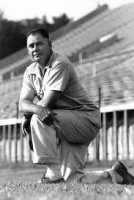
His time with Daly in particular led him to develop many ideas about how football might evolve, might be played. And he began to look for a real-world laboratory where he might put his ideas to the test. As Kozar records Neyland's recollection of that time:
The historical record isn't super clear on this next part. Some sources say Neyland arrived at the University of Tennessee in 1926, which would mean he almost immediately became head coach (he was in charge for the '26 season). Others say he spent a year as assistant coach to M.B. Banks, which implies he arrived a year earlier, in 1925. I personally think the latter is more likely. In either case, he reported to the Hill for duty as Professor of Military Science (PMS, the military title for the head of each university's ROTC program), and as assistant to the District Engineer in Chattanooga (the Army loves giving officers more than one set of duties at a time), with further additional duty as a football coach.
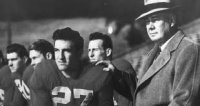
Most of the rest is well known history among Tennessee faithful. Perhaps only the nature of his ongoing ties to Army and Tennessee deserve clarification here. He was an active Army officer throughout his first ten years as the Volunteers' head coach. But it wasn't all in a single job. In 1931, he was reassigned from Knoxville to Chattanooga as the new District Engineer, where he oversaw the maintenance of navigable waterways on the Tennessee and Cumberland Rivers--while still coaching the Vols! Somewhere in this ten-year stretch from '26 to '35, Neyland was promoted from Captain to Major.
The Army eventually pulled Robert's string out of the Volunteer State, sending him to the Panama Canal Zone in 1935. At the end of that one-year assignment, Neyland--now with 20 years of service as an Army officer--either retired from active duty, or resigned his Army commission (the distinction is perhaps not important except to military veterans among us, and Robert's finances, of course). From 1936 on, he was full-time football coach with no Army duties to distract him...until he was recalled to active duty in World War II.
~ ~ ~
Perhaps I'll stop here. The more Robert shifted his life from Army to football, the more commonly known his stories become to the folks of Vol Nation. His service in the China-Burma-India campaign during World War II, and his promotions from major to colonel to brigadier general, are perhaps little understood, so maybe there's a need for a Part 4-B of the series. But let's just see how folks feel, how much discussion is generated. Maybe we can leave Neyland's exemplary career in the wonderful books that already describe it, and move on to those other coaches that are less well known.
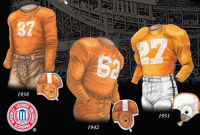
In any case, I do strongly recommend reading more about Neyland, in particular Andy Kozar's book, Football as a War Game. It is simply excellent.
Best to you all; Go Vols!
p.s. Sorry Behr, I really over-did it this time.
* I couldn't actually find anything on the weather in Greenville, Texas, in late February, 1892; the bit about snow is just me supposing what was likely.
** Some sources say Neyland received his appointment from brand new congressman Sam Rayburn. But this can't be true, as Rayburn didn't begin his first stint in Congress until March 1913. Incidentally, Rayburn himself is quite a story. A Tennessean by birth, he represented Texas in the U.S. House for a remarkable 50 years (25 2-year terms), and holds the record to this day as longest serving Speaker of the House (17 years). He had a key role ushering in the Civil Rights Era, and was influential in the construction of U.S. Route 66. An important congressional office building in Washington, DC, is named after the fellow. It is perhaps understandable that some writers would want to link the two great men by fudging the facts a bit.
*** It was still that way when I graduated in 1982, though by my time you could get your engineering degree with a "focus area" in something else, like history or political science. I think it was just a few years after I graduated that West Point began to offer arts and science degrees in a wide range of studies.
SOURCES:
Football as a War Game: The Annotated Journals of General R.R. Neyland, by Andy Kozar, (c) 2002, Falcon Press
Robert Reese Neyland | Tennessee Encyclopedia
Robert Neyland - Wikipedia
Robert Neyland
Robert Neyland.
John J. Pershing - Wikipedia
8 ENG History | 1st Cavalry Division Association
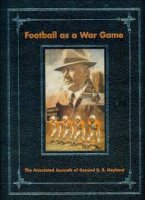
I'll just do my best to provide some nuggets of interest. In particular, I will try to describe Neyland not as an icon of the sport, but as a person, like someone you might have known. Consequently, this post will be light on the football achievements, and heavier on the man himself. At least, that's the goal. We'll see how it goes.
 #11 -- Robert Reese Neyland, 1926-1934, 1936-1940, and 1946-1952 (21 seasons)
#11 -- Robert Reese Neyland, 1926-1934, 1936-1940, and 1946-1952 (21 seasons)Robert Reese Neyland was born on a winter day in 1892 in Greenville, Texas, a town of about 10,000 folks in the northeast corner of the state--about 50 miles from Dallas in one direction and the Oklahoma border in the other. Prairie grasslands as far as the eye could see, though maybe covered by a dusting of snow when Robert came into the world.*
His dad, Robert Reece Neyland, Sr., was a lawyer, and his mother Pauline nee Lewis, a home maker. Robert had an older sister, Carroll, and would a few years later have a younger brother, Mayo. Interestingly, Robert's middle name was spelled differently than his father's, and he would apparently never use the Junior suffix [instead, he would much later in life give the Jr. title to his son]. As far as I've been able to find, he never went by Bob or Rob; it was always Robert.
I didn't find anything describing Neyland's youth, so we'll just have to assume he was an athletic child, running around the community and the prairies with his friends, playing pickup games in open fields. He can't have been too shabby in schoolwork, either, given his higher education at a time when going to college was not at all common.
Graduating from high school in the summer of 1910, Neyland immediately enrolled in the local community college, Burleson Junior College. After one year there, he transferred to Texas A&M to study engineering. He also joined the Aggie baseball and football teams. One year later, he was notified that he'd won a competitive appointment to West Point.** He reported to the Academy in the summer of 1912; probably took a train up.
Back in the day, every cadet at West Point was an engineering student; there were no other degrees offered, just engineering.*** And not only was engineering the subject of the day, it was also the preferred career field, or "branch" of the Army, that the higher-ranking graduates tended to want to choose. Those whose class standing wasn't high enough to get into the Corps of Engineers would have to pick from among the infantry, cavalry, artillery, and the like. Neyland would become an Engineer officer--another indicator that his academics were solid.
Academics and military education (formations, parades, exercises, etc.) didn't take up all of Robert's energy; he had plenty left over for sports. He played end (back then, a lineman position) for the football team, was the pitcher on the baseball diamond, and in his sophomore, junior, and senior years won the school heavyweight boxing championship.
The boxing titles came about this way. In his yearling year (at West Point, sophomores are yearlings, just as freshmen are plebes), Robert got in some trouble for "a hazing incident," and was prohibited from participating in any sports "outside the gym." Baseball and football were out for the next six or seven months--an eternity, in the mind of a young man. So he took up boxing.
Luckily for us Vols fans, he was able to get back to football (and baseball) his junior and senior years.
You might recognize the names of a couple of Neyland's West Point teammates: Dwight Eisenhower was with him on the gridiron, and Omar Bradley shared the diamond with him. They were both a year ahead of Robert, in the Class of 1915.
One super important thing must be noted about Neyland's exposure to the very foundations of the game of football while a West Point cadet, and there's no one who could say it as well as Professor Andy Kozar. So I'll simply quote him in entirety--it is a long quote, but every sentence has importance in an understanding of Neyland's football coaching foundations:
In the beginning there was Camp, and he was The Law. He said, "Let there be a line of scrimmage," and there was. He said, "Let there be eleven players," and there were. He said, "Let there be a system of downs to determine ball possession," and it was so.
But if Walter Camp, the great 1888-1892 Yale coach, was the father of football, then another Yalie who went east [sic] to Chicago, Amos Alonzo Stagg, was surely the sport's first artist, weaving laterals and reverses into the game's design, putting the man in motion, numbering the players, and bestowing varsity letters. The game would never look the same after this former divinity student had his way.
Of course, that is not to discount the contributions of Glenn "Pop" Warner, the wily shape shifter who relished the tricky play and whose genius birthed the single wing offense, which provided sufficient deception for both the running and passing game.
These were the men who created football on the fly, on practice and game fields of the Ivies, and in the case of Warner on the fields of the Carlisle Indian School where his Native American players included the great Jim Thorpe.
In the early years Yale dominated the game, but in 1898 the arrival of two players ushered in the "golden age" of Harvard football. One was the aristocratic Percy Haughton; the other a sensational quarterback named Charles Daly who earned All American status there and later at West Point. Both men went on to become noted coaches. Haughton was a brilliant innovator, assimilating the ideas of Camp and Warner into his own wholly original contributions. When Haughton was made Harvard's head coach in 1908, he hired Charles Daly as his assistant. Although the two men were contemporaries, it was generally agreed that Daly absorbed most of Haughton's philosophies and that he passed them on when he himself became a head coach at West Point.
Thus, when a young Texan by the name of Robert Reese Neyland arrived at the Point in 1912, his football lineage would stretch back to the founders of the game.
In short, Neyland was not a contemporary of the fathers of American football; Camp, Stagg, Warner and Haughton were a generation ahead of him. But he did inherit from them, through coach Charles Daly, the mental framework he would use throughout a lifetime thinking about the game.
Enough about Neyland's college years; let's move on.
Robert graduated and was commissioned a second lieutenant of Engineers in the United States Army in 1916. His first post was along the Mexican border building levees, roads and bridges. Then the U.S. Army (belatedly) joined in the First World War under the leadership of General John "Black Jack" Pershing, and took Neyland along. He commanded an Engineer company in the Meuse-Argonne campaign in the fall of 1918, the last major Allied offensive of the war and the largest, bloodiest offensive of the Allied Expeditionary Force of which Robert's company was one small part.
In Football as a War Game, Professor Kozar notes that Neyland served after the war as commander of the Eighth Engineers in Black Jack Pershing's expedition against Pancho Villa in Mexico. There are a couple of problems with this. First, Pershing's expedition against Pancho Villa took place in 1916, before the US Army entered the war in Europe. And second, that timing would mean that Neyland commanded an engineer battalion (normally the command of a lieutenant colonel) before he commanded a company (a job for a much younger captain). Weird and rare things like this have happened in the history of the United States Army, but since we already know for a fact that Dr. Kozar got the timing wrong, it's probably safe to assume that the order of command for Neyland got mixed up, too.
From what I can piece together, here's what I think really happened: Neyland graduated in 1916. He was assigned as a lieutenant to a unit in Texas--maybe the Eighth Engineer Battalion, which was there--where a lot of engineering work was being done in support of Pershing's actions against Pancho Villa. This was the time when the US Army was shifting from horses to motor transport; roads and bridges were needed to a far greater extent than ever before. Then, a year later, the United States committed to helping the Allies in Europe. The Eighth Engineers deployed (this is confirmed), and Neyland went as part of the unit (supposition, but it makes a lot of sense). At some point, he was promoted from 2nd to 1st lieutenant, and then to captain...and given command of a company in time for the Meuse-Argonne offensive.
And perhaps the promotion to captain was temporary (in those days, the US Army had an overly complex system of promotions that allowed for "temporary" and "permanent" ranks, which could be vastly different, so that after serving a time at a higher rank, you could be returned to your lower, permanent rank), and it was this post-war demotion that Andy Kozar mentions in his excellent book, so that it would be more accurate to say that Captain Neyland commanded (a subordinate unit) IN the Eighth Engineers rather than that he commanded THE Eighth Engineers.
One thing is sure: by the time he was 26 years old, Robert was a war veteran and combat commander. Demoted or not, those experiences last a lifetime.
After the war, Neyland returned (probably with his battalion) to Texas, then in 1920 was sent by the Corps of Engineers to MIT for a year of post-graduate studies. He then reported back to West Point. The historical record only mentions two duties of Robert's at the Academy: six months as aide to General Douglas MacArthur, the Superintendent (West Point equivalent to University President or Chancellor), and two years as assistant football coach to the man who coached him as a cadet, Charles Daly. Reading between the lines, I think it is quite possible that Neyland was sent to MIT for an advanced engineering degree in preparation for teaching duties at West Point, and that this was his primary job. Helping coach the football team (and baseball, and basketball) while also teaching would be a secondary duty, and six months as MacArthur's aide would have been a temporary special assignment. In any case, Neyland's connection to MacArthur, and with Daly, would each in their own way prove important in the shaping of his future.

His time with Daly in particular led him to develop many ideas about how football might evolve, might be played. And he began to look for a real-world laboratory where he might put his ideas to the test. As Kozar records Neyland's recollection of that time:
"I tried to get myself an ROTC job where I could do a little football coaching and experiment and see whether or not there was any sense to what I had dreamed up. That's actually how I got interested in it...."
Neyland searched the country for the appropriate ROTC vacancy and found one in Iowa and another in Tennessee. He decided his destiny lay in Knoxville.
The historical record isn't super clear on this next part. Some sources say Neyland arrived at the University of Tennessee in 1926, which would mean he almost immediately became head coach (he was in charge for the '26 season). Others say he spent a year as assistant coach to M.B. Banks, which implies he arrived a year earlier, in 1925. I personally think the latter is more likely. In either case, he reported to the Hill for duty as Professor of Military Science (PMS, the military title for the head of each university's ROTC program), and as assistant to the District Engineer in Chattanooga (the Army loves giving officers more than one set of duties at a time), with further additional duty as a football coach.

Most of the rest is well known history among Tennessee faithful. Perhaps only the nature of his ongoing ties to Army and Tennessee deserve clarification here. He was an active Army officer throughout his first ten years as the Volunteers' head coach. But it wasn't all in a single job. In 1931, he was reassigned from Knoxville to Chattanooga as the new District Engineer, where he oversaw the maintenance of navigable waterways on the Tennessee and Cumberland Rivers--while still coaching the Vols! Somewhere in this ten-year stretch from '26 to '35, Neyland was promoted from Captain to Major.
The Army eventually pulled Robert's string out of the Volunteer State, sending him to the Panama Canal Zone in 1935. At the end of that one-year assignment, Neyland--now with 20 years of service as an Army officer--either retired from active duty, or resigned his Army commission (the distinction is perhaps not important except to military veterans among us, and Robert's finances, of course). From 1936 on, he was full-time football coach with no Army duties to distract him...until he was recalled to active duty in World War II.
~ ~ ~
Perhaps I'll stop here. The more Robert shifted his life from Army to football, the more commonly known his stories become to the folks of Vol Nation. His service in the China-Burma-India campaign during World War II, and his promotions from major to colonel to brigadier general, are perhaps little understood, so maybe there's a need for a Part 4-B of the series. But let's just see how folks feel, how much discussion is generated. Maybe we can leave Neyland's exemplary career in the wonderful books that already describe it, and move on to those other coaches that are less well known.

In any case, I do strongly recommend reading more about Neyland, in particular Andy Kozar's book, Football as a War Game. It is simply excellent.
Best to you all; Go Vols!
p.s. Sorry Behr, I really over-did it this time.
* I couldn't actually find anything on the weather in Greenville, Texas, in late February, 1892; the bit about snow is just me supposing what was likely.
** Some sources say Neyland received his appointment from brand new congressman Sam Rayburn. But this can't be true, as Rayburn didn't begin his first stint in Congress until March 1913. Incidentally, Rayburn himself is quite a story. A Tennessean by birth, he represented Texas in the U.S. House for a remarkable 50 years (25 2-year terms), and holds the record to this day as longest serving Speaker of the House (17 years). He had a key role ushering in the Civil Rights Era, and was influential in the construction of U.S. Route 66. An important congressional office building in Washington, DC, is named after the fellow. It is perhaps understandable that some writers would want to link the two great men by fudging the facts a bit.
*** It was still that way when I graduated in 1982, though by my time you could get your engineering degree with a "focus area" in something else, like history or political science. I think it was just a few years after I graduated that West Point began to offer arts and science degrees in a wide range of studies.
SOURCES:
Football as a War Game: The Annotated Journals of General R.R. Neyland, by Andy Kozar, (c) 2002, Falcon Press
Robert Reese Neyland | Tennessee Encyclopedia
Robert Neyland - Wikipedia
Robert Neyland
Robert Neyland.
John J. Pershing - Wikipedia
8 ENG History | 1st Cavalry Division Association

Last edited:


